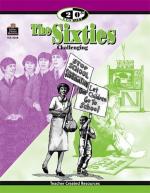|
This section contains 363 words (approx. 2 pages at 300 words per page) |

|
Counterculture Effects.
As the cold war moved into its third decade, cultural currents were changing, particularly among young people. Most continued to share and operate out of the values of their parents, but a significant group, located in large cities and around college campuses, began to reflect behavior that would be called counterculture. They left traditional religion behind them. In the face of the growing attraction of aspects of this set of attitudes, there were a variety of efforts to make religion more relevant to the needs and interests of the young. Malcolm Boyd's Are You Running with Me, Jesus? (1967) was one of the most dramatic evidences of these efforts.
Trendiness.
Conservatives complained bitterly about the trendiness of religious leaders who seemed too willing to abandon old forms simply to reach young people "where they were at." As the Roman Catholic church modified...
|
This section contains 363 words (approx. 2 pages at 300 words per page) |

|




